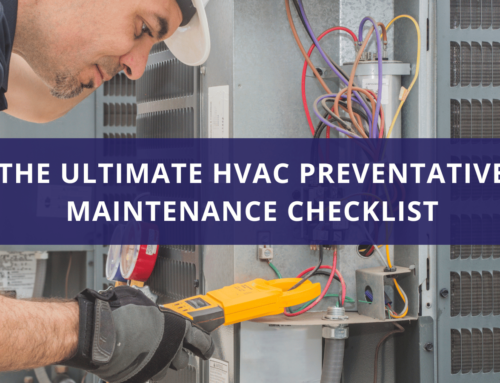The kitchen exhaust fan seem like a simple piece of equipment when you think of everything that goes into the overall operation and functionality of a restaurant. However, restaurateurs who have spent time in the heart of the industry know better.
In reality, these fans are the core functioning piece of the puzzle for a restaurant. According to Johnathan Mason, Hoods Department Manager for SLM Facility Solutions, ignoring proper maintenance and regularly scheduled cleanings for your fans will result in two things. A significant loss of money or potential shutdown of the restaurant.
EXHAUST FAN BASICS
An exhaust fan is a mechanical ventilation device that creates an airway to expel impure or contaminated air and draw in clean air. Any restaurant using cooking equipment and produces smoke requires an exhaust fan to remove flammable fumes from the air. This improves the quality of air within the establishment but also ensures the safety and well-being of all customers and employees. In addition to protecting the inside of a restaurant, exhaust fans also assist in helping to prevent roof and building damage by directing air away from the rooftop and building.
There are many styles of fans within restaurants, including up blast, utility, in line and down blast. Each fan has a separate function and method for improving the overall air quality within the facility. When selecting an exhaust fan, you should consider variables such as temperature, grease content in the air, the exhaust system and the fan’s ability to handle friction, distance and airflow resistance.
TYPES OF FANS
UP-BLAST FAN
The most common fan used for exhaust systems are the up-blast, or “mushroom.”. This type is in high demand due to its low cost and user-friendly installation process. Most fast-food, casual, and fine-dining restaurants use this style fan. Constructed of aluminum, the housing of the up-blast fan includes a list of requirements when installed on a rooftop. Phil Ackland’s “Commercial Kitchen Exhaust Systems Manual” states that up-blast fans must:
- Able to drain grease out of any trap or low point into a non-combustible container or collection device
- Have a grease collection device
- Hinged and have a flexible weatherproof electrical cable to allow for cleaning
UTILITY FAN
This fan is stronger and more durable, compared to the up-blast fan, and has a powerful motor and lift. Lift refers to air moved or “lifted” up through the fan. Utility fans differ from up-blast fans as they cannot tilt and require access from the rear side of the housing. They require additional maintenance due to the amount of ductwork that runs into the fan and more difficult to clean.
INLINE FAN
Used in larger systems that include constraints on how the ductwork runs through the building. Typically, placed where the ductwork may run into a parking garage. High-rise buildings with a ground-level restaurant are encouraged to use this type of fan.
DOWN-BLAST FAN
Down-blast, or downdraft, fans are usually not appropriate for use in a standard restaurant that produces a large amount of grease. This is because they blow the grease down into the ductwork instead of lifting it out.
COMMON EXHAUST FAN ISSUES
Patrick Kennedy, President at K-Kleen Inc., explains some common issues with exhaust fans:
- Rattling. This occurs when components become defective due to a lack of maintenance. Grease buildup on the fan blades or work belt causes most rattles. Usually, a good cleaning and belt change rectifies the problem.
- Screws. Screws keep the fan from bouncing around, which could cause more damage to the fan.
- Wiring melt. Wires melt due to a fan drawing in too much amperage. This happens for various reasons such as the fan is dirty causing it to work harder than usual or the belt becomes loose or worn. It will also occur due to excessive movement. Excessive movements such as opening and closing a fan, will cause the wires to fray or loosen.
Mason states facility managers need to look out for the following:
- Access panels. By utilizing access panels, your ductwork becomes easily accessible and cleaned properly. Without these panels, grease tends to build up which causes additional problems such as fires, foul odors, and a contaminated working environment.
- Ductwork. Before cleaning, a technician needs to see a blueprint of the ductwork or some general documentation as to what type of ductwork the location has. This advises them as to whether they need access panels to complete the cleaning.
- Lack of maintenance of the fan and the roof containment system. These two items significantly increase the chance of grease leaks. This occurs when the fan blades are not properly running or the housing of the fan is not thoroughly cleaned. The housing of the fan can be tricky to clean since it’s the protective covering for the motor and electrical wiring. If the grease leaks onto the roof of a building, it will destroy the roof costing up to $18,000 for repair or replacement. The solution to grease issues includes a proper cleaning schedule as well as a grease containment system.
PROPER GREASE CONTAINMENT
Grease-containment systems provide a significant amount of protection from grease damage by trapping the grease. The two primary types of grease containment systems: high capacity and side-kick.
High-capacity grease-containment systems while costly decrease the chance of most grease leaks. This style is primarily designed for restaurants that produce a high volume of grease. By combining grease-absorbing pads with a four-sided application, it ensures to capture all grease.
The side-kick are designed for applications that produce much lower volumes of grease. This version includes a container on one side of the fan, instead of all four, along with grease-absorbing pads to reduce the risk of grease leaking onto the roof. By protecting the roof, you keep the working areas surrounding the fan safe for technicians who come to service the fans on a regular basis. It also ultimately saves you money.
HINGE KITS
Hinge kits are a vital part of the fan that often get overlooked during installation. However, without hinges, your fan will not meet NFPA- 96 code requirements. In addition, a lack of hinges can also lead to roof and electrical damage during cleanings, since the technician will have to place the fan directly onto the roof. Often, the fan will cut wires or create holes in the foundation of the roof if placed improperly. Hinge kits allow for safer and easier cleaning underneath the fan and in the duct by tipping the fan instead of completely lifting it o the exhaust system onto the roof. This allows easier accessibility for technicians to complete their cleaning in the most efficient way.
PREVENTING FIRES
Consistent maintenance of exhaust fans is the primary defense against fire hazards in a restaurant. Every year, an estimated 5,900 restaurant fires occur in the United States, causing an average of 75 injuries and $172 million in property loss.
The cleaning process includes the exhaust of the hood, all ductwork, and the fans. During a clean, technicians remove grease buildup from the entire system to ensure it does not end up in the restaurant’s floor drains. To remove all grease particles from the hood, duct, and fan, technicians may use a variety of different sanitizing methods such as chemical degreasers, scrubbing, and power washing. Quality control is vital during cleanings to ensure compliance with all applicable municipal, state, and NFPA codes.
Upon completion, the technician places a proof-of-performance label or sticker on the hood. The label assures the fire marshal the exhaust system was cleaned properly and when. Ideally, further, documentation such as a list of any service issues, documentation of the type of cleaning, and before-and-after photos are kept.
In Conclusion
By keeping up with the maintenance of your kitchen exhaust fan, your restaurant will benefit from energy savings, improved health standards, a cleaner working environment, and minimized product contamination. Preventive maintenance cleanings and repair costs are dramatically less than damages that may occur without consistent maintenance. The risk of fire hazards also significantly decreases. Also, you will remain in compliance with local municipal fire codes. Not only that, but your equipment enjoys a longer life and saves you many future headaches.
Article was featured in RFMA Facilitator.






